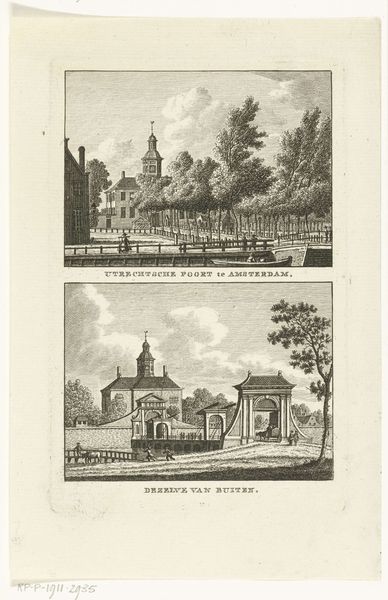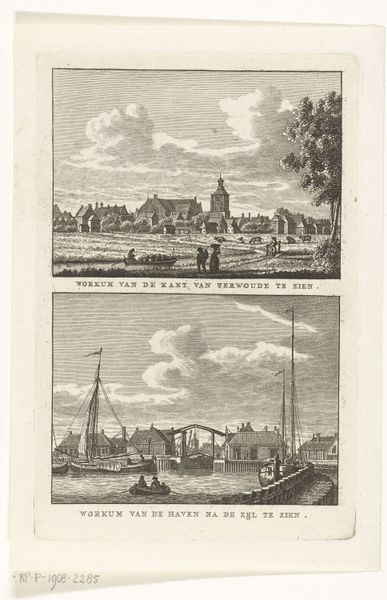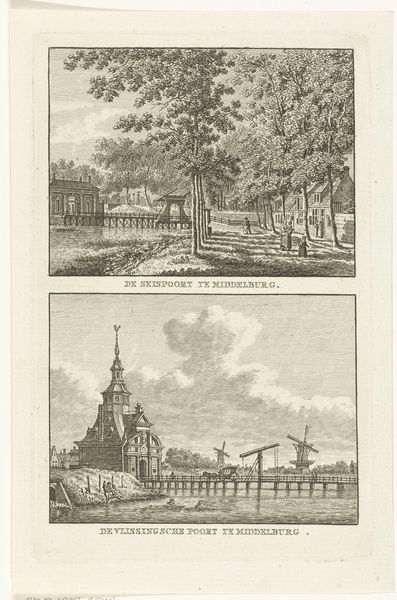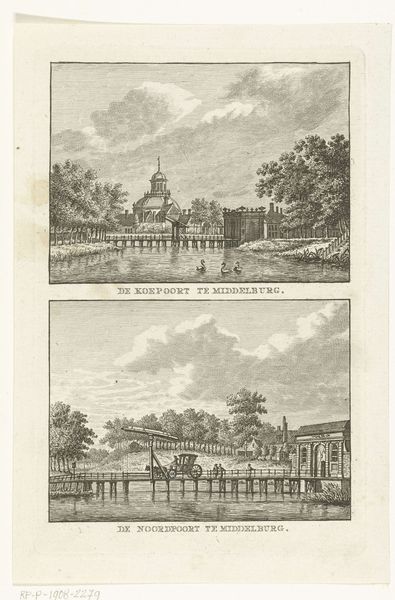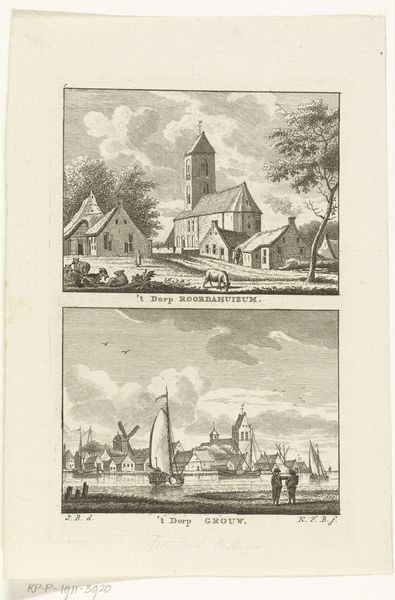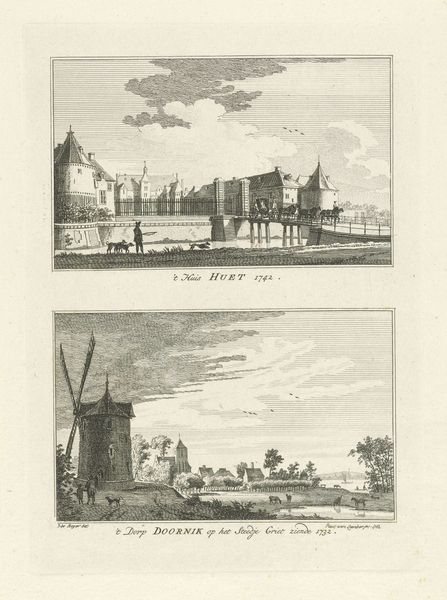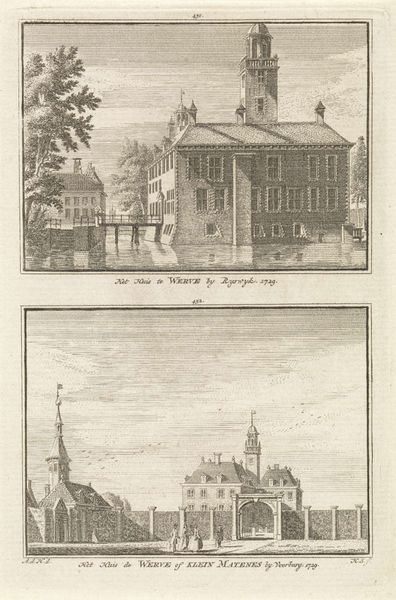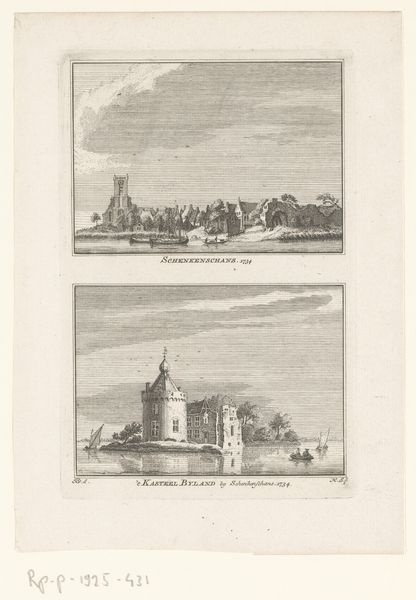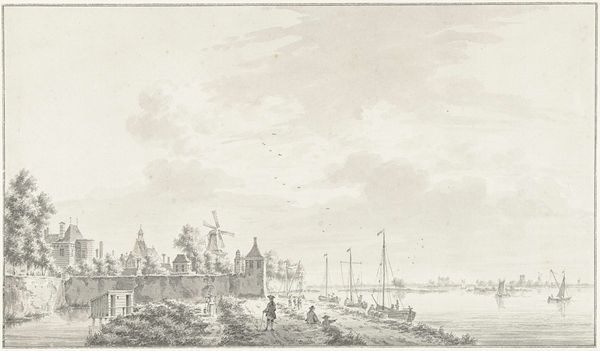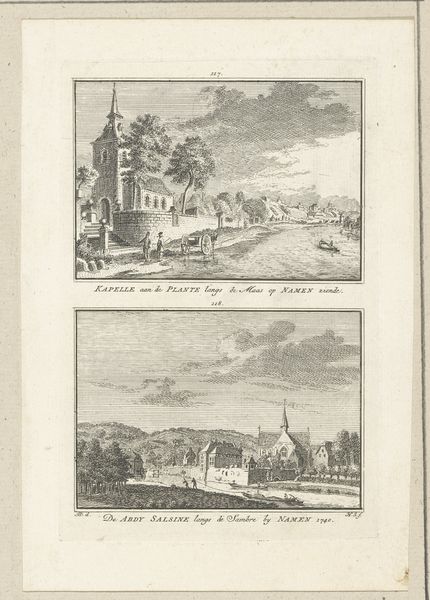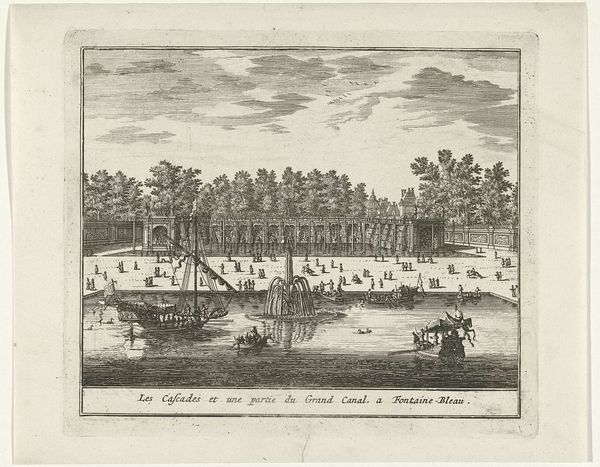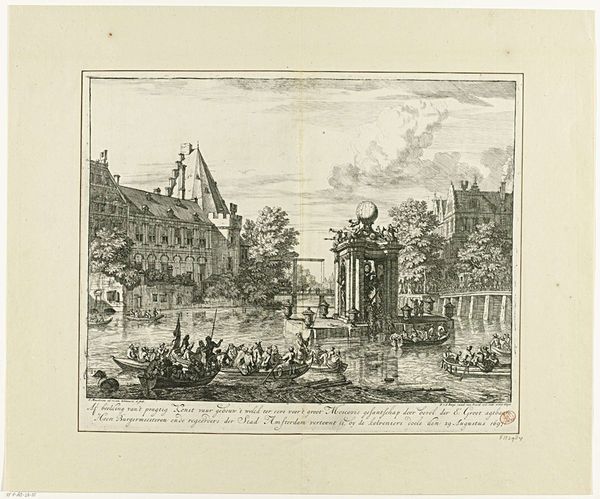
Twee stadsgezichten te Amsterdam met Muiderpoort 1786 - 1792
0:00
0:00
carelfrederikibendorp
Rijksmuseum
drawing, print, etching, ink, engraving
#
drawing
#
dutch-golden-age
# print
#
etching
#
old engraving style
#
landscape
#
ink
#
cityscape
#
engraving
Dimensions: height 173 mm, width 114 mm
Copyright: Rijks Museum: Open Domain
Curator: Immediately, a kind of pre-industrial melancholia strikes me. The quiet stillness, the subdued tones. It's quite striking. Editor: We're looking at "Twee stadsgezichten te Amsterdam met Muiderpoort," or "Two City Views of Amsterdam with Muiderpoort" by Carel Frederik Bendorp I, created between 1786 and 1792. It combines etching and engraving, printed in ink. Two cityscapes, one atop the other, divide the composition. Curator: The artist's choice of etching and engraving creates such a detailed texture. The sheer amount of tiny lines that evoke a particular sense of atmosphere. What could you tell me about its making? Editor: Bendorp's approach highlights a very labour-intensive reproduction process. The meticulous scoring of the metal plate, the careful inking, the pressure of the printing press – all speak to the craft involved in disseminating images of Amsterdam to a wider audience. The multiple impressions that can be achieved through printing processes also lowers the threshold of production and circulation of images, and hence information. Curator: The dual composition really activates a comparative exercise. The play of light in each scene and how it articulates the architecture creates very dynamic variations, doesn't it? Note the solidity of the gate, contrasting with the vaporous rendering of the sky. And yet the geometries interlock the image-object. Editor: Precisely. Think of the role these images played in shaping civic identity. The gate symbolizes Amsterdam’s connection to the broader Dutch landscape, its maritime prowess reflected in the canal and boats, the labor implied through the inclusion of the mills. The city becomes more than just a collection of buildings; it’s an engine. Curator: There’s an elegance here, certainly, a formal cohesion that extends beyond mere depiction. The visual relationship suggests a philosophical one too, about inside versus outside, civilization versus nature. Editor: A tension, perhaps. I also appreciate that in an era of great civic expansion, the medium grants us access to seeing the city's means of projecting power and also connecting it to networks of industry, trade and communication. Curator: Thinking about form, I think I have gained an understanding about the essence of a symbolic Amsterdam. Editor: Agreed. It makes you reconsider these everyday landscapes with renewed attentiveness towards labor and process.
Comments
No comments
Be the first to comment and join the conversation on the ultimate creative platform.
